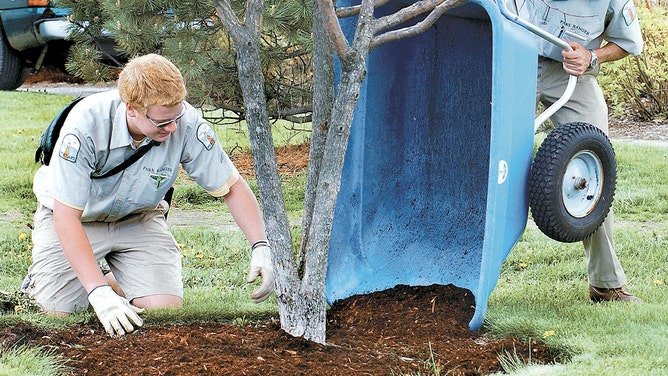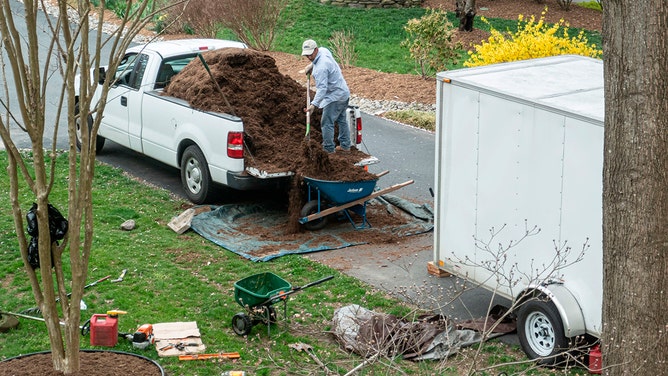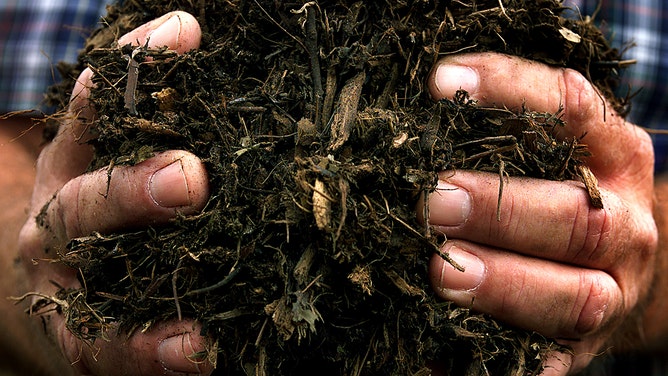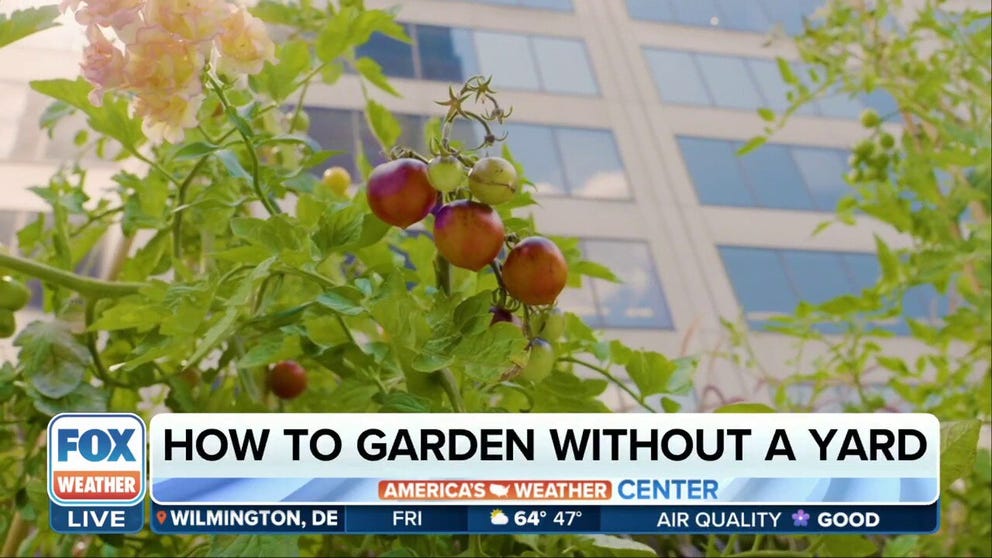Your improper mulching might be killing your trees: 5 mistakes yard experts see
Before you go off and buy out your local hardware store's blue-light special on summer mulch, there are a few things you might be doing that are killing your trees and your budget.
Tips for getting your backyard garden growing
As many cool weather veggies continue to produce, farmers and backyard gardeners now look to planting warm weather crops. FOX Weather's Will Nunley links up with Erica, a backyard gardener who has all of her seedlings ready for transplant. She shares the joy of finally starting her outdoor garden.
Are you a victim of mulch volcanoes in your yard?
Before you go off and buy out your local hardware store's blue-light special on summer mulch, there are a few things you might be doing that are killing your trees and your budget.
Here are five common mulching mistakes new and sometimes more experienced gardeners make when it comes to function over form.
PET OWNERS SHOULD AVOID GROWING THESE POTENTIALLY DEADLY PLANTS

Portland Park Ranger, Matthew Sweatt spreads the mulch that Portland Park Ranger, Jordan Gower, dumps at the base of the tree as he keeps his head below the snarly branches.
(Gordon Chibroski/Portland Press Herald / Getty Images)
1. Smother the magma
Have you heard of the term "volcano mulching?" It's the most common mistake next to not mulching a young tree at all, according to horticulture agent Dennis Patton, of the Johnson County K-State Research and Extension.
It refers to the placement or piling of mulch up onto the trunk of a tree.
If you stand back and look at your mulch pile, and it looks more cone-shaped than like a donut or bagel around the tree, there's a problem.
"You should see the raised 3 inches of mulch out and around the tree," Patton said. "The trunk should be coming out of the hole in the donut."
According to Patton, the issues with mulch placement next to the trunk are many.
Wood placed next to a tree bark will create a moist and humid area. It will then begin to rot when it's damp. Placing mulch next to the trunk can result in the decay of the bark layer, which will slowly kill the tree.
A lack of productive root development, which supports the tree and can lead to other issues, can also happen in the dark, moist area.
"Volcanoes can also increase insect and rodent damage," Patton said. "They are attracted to the damp, cool layer. Feeding will damage the bark/cambium layer (growth layer) of the tree."
Patton said any damage to the trunk and cambium will stunt the tree's growth and can lead to death.
GET READY FOR 'ROUGH' POLLEN SEASON THIS YEAR, ALLERGIST WARNS

A man unloads garden mulch from a truck in Fairfax, Virginia.
(Robert Knopes/Education Images/Universal Images Group / Getty Images)
2. Mr. Too Much
A properly mulched tree should have about 3 inches of mulch around the tree. The mulch ring (not a volcano) should extend around 3 feet around the tree.
When applying, Patton said you should take your fingers and pull the mulch back a few inches from the base of the tree. You can also make the mulch ring bigger.
"Research has shown keeping the grass competition away from the base of the tree can almost double the growth rate over a 10-year period," Patton said.
WHAT SEASON DO FRUITS AND VEGETABLES GROW IN?

Terry Smith holds a handful of his high-grade mulch, made only of tree cuttings at Thomas Soil Builders in El Monte, California.
(Robert Gauthier/Los Angeles Times / Getty Images)
3. Weed-be-gone
Weed barriers, either fabrics or cloth, do not harm the tree unless they are cutting into the trunk and girdling growth.
According to Patton, there is no need for them around a tree.
"The mulch layer will control most weed growth, conserve soil moisture and keep the soil cooler, increasing rooting," he said.
Most landscape fabrics – not plastic – will have good aeration but, again, really not needed, Patton adds.
"Over the long term as the tree grows, they will get in way of the trunk expansion, thus needing to be removed," he said.
FLORIDA MAN BREAKS STATE RECORD WITH 1,000-POUND PUMPKIN
Creating a garden without a yard
Co-founder and CEO of Microhabitat Orlane Panet joins FOX Weather to share tips about creating a garden in major cities and how Microhabitat works with companies to develop urban farms to help underprivileged communities.
4. Free is OK
Your plants don’t care about the mulch you use, you do. There are all types of mulches that provide the same benefits.
Patton said purchased mulches are often screened, so the partial size is similar. Purchased mulches can also range from hard woods, pine bark, pecan shells, and other materials all with a different look.
Free or cheap mulch may not be screened with various sizes.
"The fear is they contain disease or insect," Patton said. "They do not."
Chipped wood from an arborist or municipal services has various woody materials. Once chipped, Patton said they do not carry pathogens.
"My take is, use the mulch you like and fits your budget," Patton said. "Keep in mind; mulch is to serve a function, not to bring 'color’ to the landscape."
WHAT IS 'NO MOW MAY'? IT'S A WAY TO SAVE THE BEES
How to protect your garden from unwanted animals and pests
FOX Weather's Will Nunley shares tips and tricks on how to best protect your garden space from animals and pests.
5. Year-round invite
Did you know mulching can be done any time of the year? It can, but for some reason, it always tends to be a spring chore.
"Personally, I often like to mulch in the fall as there is less to do in the garden," Patton said.
Mulch provides weed control, cooler soil temperatures and moisture conservation. As they break down, the mulch releases small amounts of nutrients into the soil, adding organic matter.
While summer mulches go out and around the plants, winter mulch helps reduce temperature changes in the soil. They also cover the plants.
Winter mulch is also applied after the plants are dormant in the fall and removed when growth begins.


